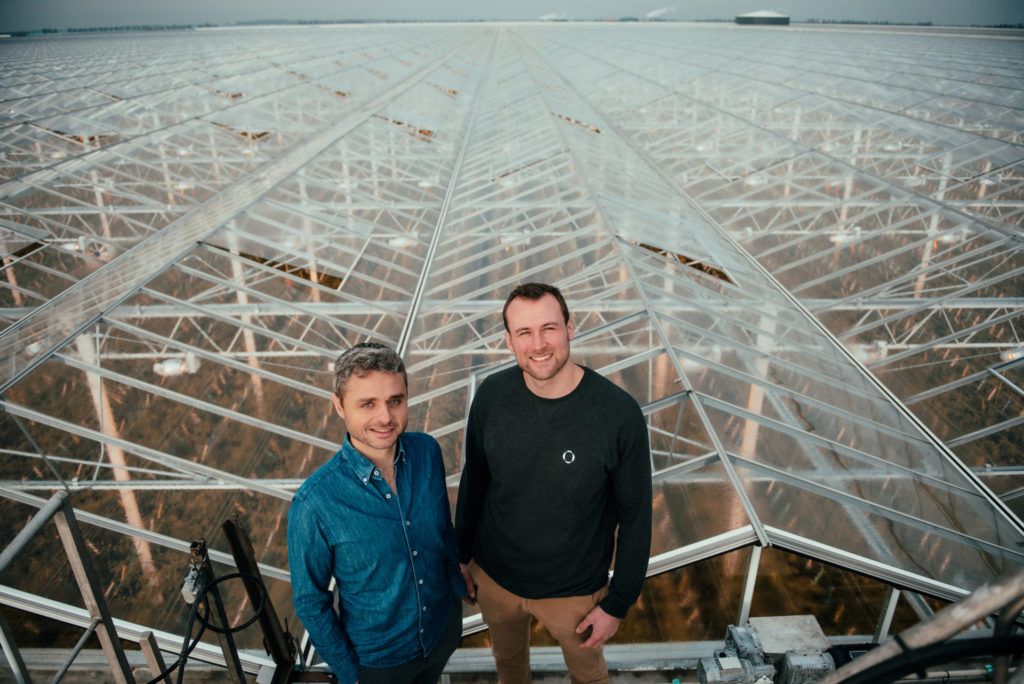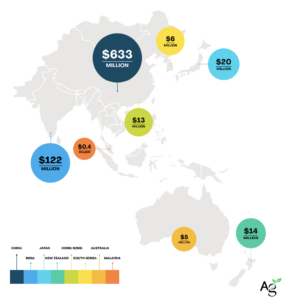- Netherlands-based Source.ag has closed a $23 million Series A to expand its artificial intelligence (AI) system for greenhouse growers.
- Agrifoodtech VC Astanor Ventures led the round with participation from Acre Venture Partners and several “leading greenhouse operators” in the Netherlands.
- The Series A brings Source.ag’s total funding to date to $35 million in just under two years.
- Source.ag will invest the capital into two new AI products for its system.

‘Extreme efficiencies’ for the greenhouse
“We’ve been following the team for a while and are very impressed by their execution,” Arnout Dijkhuizen, an investment principal at Astanor, tells AFN.
Astanor, whose portfolio also includes indoor mushroom farming startup Smallhold and insect protein company Ÿnsect, participated in Source.ag’s $10 million seed round last year.
When asked why the firm chose to lead the Series A, Dijkhuizen highlighted the efficiency Source.ag’s AI system brings to greenhouse production: “It can create extreme efficiencies and have a massive impact on how we grow more fresh produce for the world, and provide more access and food transparency.”
“The impact angle is very important — helping growers to have a more resilient business model for now and in the future,” he added.
Optimizing for (greenhouse) growth
Founded in 2020, Source.ag launched its first commercial product, Source Track, in 2022.
Its AI-based decision support system defines and optimizes a grower’s cultivation strategy.
Successful greenhouse cultivation requires certain temperature, humidity and light levels inside. Growers have to constantly adjust their greenhouses to control these elements, which also vary based on the crop (e.g., tomatoes versus peppers).
For example, major changes in humidity levels can impact plant health. Temperature is a major factor in controlling humidity, so growers must monitor and maintain temperature in the greenhouse, including how outdoor weather impacts it. This in turn requires resources like water and energy. Growers must know how much of each to use in order to achieve optimal climates in the greenhouse.
Source.ag essentially provides a dynamic system that can adjust a grower’s cultivation strategy based on these ever-changing factors. The hardware-agnostic system does this by simulating the relationship between plant growth and resource usage, tracking and improving the cultivation strategy in real time.
The other Source.ag system also collaborates with other systems in the greenhouse to execute the cultivation strategy.
Beyond cultivating the right climate, Source.ag’s system is also about growing more with fewer resources, preferably at scale.
“What they’re enabling is greenhouse growing on steroids,” says Dijkhuizen. “Growers have typically developed their capabilities as a craft. This technology enables growers to further enhance the efficiency of greenhouse growing and scale their activities.”
He also highlights the ongoing labor shortage, which limits a greenhouse grower’s ability to scale operations. “By using AI you can manage more with fewer resources.”

Applications outside the greenhouse
Doing more with less is now a top priority in agriculture. Farmers and food companies alike feel the pressure to reduce land, water and input use and at the same time be ready to produce more food for an estimated 9.7 billion people in 2050.
Greenhouse growing can tick the boxes for resource-efficient, pesticide-free farming done in a relatively small amount of space — if, that is, growers can constantly adapt with their environment’s ever-changing set of demands.
This is where the strength of Source.ag’s system comes into play. “They’ve been able to model plant growth on a granular level to better predict and forecast growth of fruits,” says Dijkhuizen.
Source.ag says its greenhouse growing produces up to 15 times higher yields than conventional farming and “up to 20 times less water” than traditional methods. The company says it has increased its number of users “tenfold” over the last year.
For now, tomatoes and peppers are its staple crops, those being the largest global fresh vegetable segments. They are also crops with a long history in the greenhouse.
In 2023, the company will launch two new products: Source Cultivate and Source Control. With these, growers will be able to simulate full seasons of crop growth and tailor greenhouse systems to specific gene and crop varieties.
Eventually, the company would like to expand to other crops, and some of the Series A funding will go towards supporting this goal.
For his part, Dijkhuizen sees a future where the Source.ag system can enable not just new crop types but also different agricultural settings.
“The technology enables a lot of the biological processes steered by growers and farmers,” he says. “It can be applied in greenhouses, but we also see the application for semi-open fields or open fields growing any crop. This can lead to more transparency and food security.”
















Sponsored
International Fresh Produce Association launches year 3 of its produce accelerator